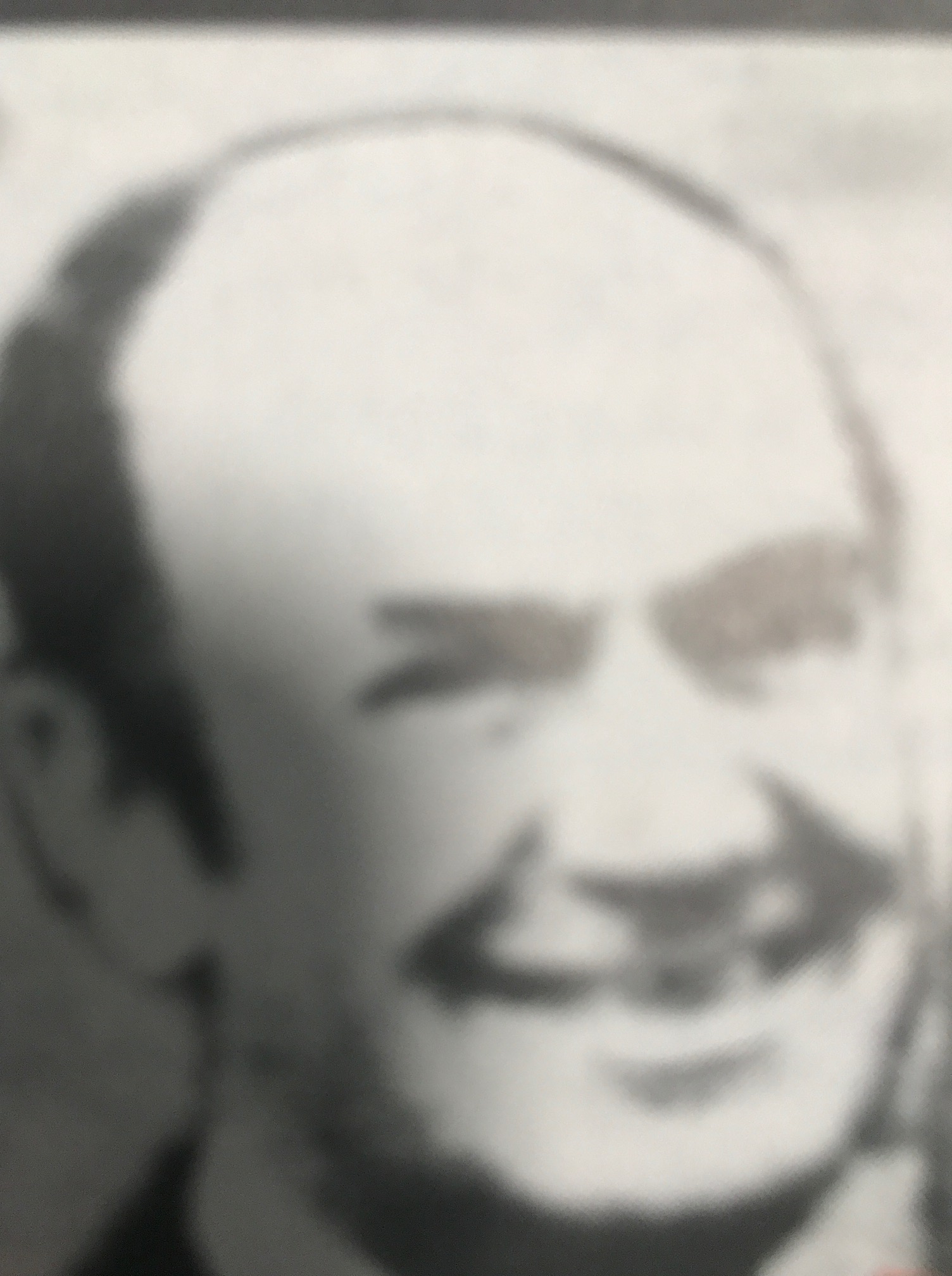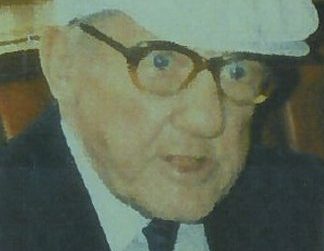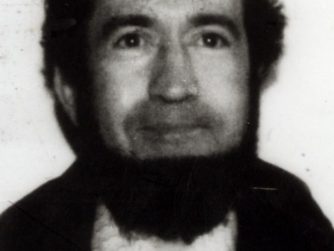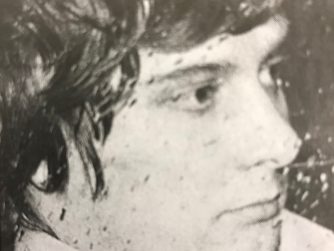Readers in the United Kingdom will undoubtedly be familiar with the July 2010 Northumbria police armed manhunt for Raoul Moat, a 37-year-old Newcastle Upon Tyne man who had shot three people just two days after being released from Durham Prison. Moat shot his ex partner Samantha Stobbart, her new boyfriend Chris Brown, and PC David Rathband, with a sawn off shotgun. Brown was killed, Stobbart was severely wounded, and PC Rathband was left permanently blinded by his injuries. Moat was then on the run for six days before being cornered in the Northumberland town of Rothbury, six days throughout which the nation was gripped with the constant reports of a crazed gunman at large, and watching the manhunt for Moat unfold on television. Moat was eventually to take his own life during a standoff with police when he was cornered near a riverbank in the town. The hunt for Moat received massive publicity and was the largest manhunt of its kind in modern times. Yet it has a precursor, albeit 28 years before, almost to the day, in 1982. This manhunt too involved an armed shooter at large, who shot 5 people over a period of 17 days before taking his own life. Three of those shot by the gunman were killed, including two serving police officers. Even a police dog was shot during the rampage and manhunt for a criminal who rapidly became the most wanted man in Britain, and earned the moniker, “The Phantom Of The Forest”.
The trail of terror began early in the morning of Thursday 17th June 1982, at the beauty spot of Norwood Edge, a country park situated near the B6541 Otley-Blubberhouses Road, near the market town of Otley in the county of West Yorkshire. PC David Ian Haigh, a 29-year-old West Yorkshire Police officer, had started a day shift at 06:00am that day, and one of his first tasks was to check the daily crime reports in order to follow-up any outstanding actions passed on by the off going night-shift. One such task was the serving of a court summons for suspected poaching to a man who was reported to be living rough in a van in the Norwood Edge area. PC Haigh made this his first port of call that day, and should have been back on patrol relatively quickly after such a simple task. But when PC Haigh had not responded to several radio messages given that morning, a separate patrol was sent to search for the officer, thinking he may be having vehicle trouble or having had an accident.

What the patrol found was to launch what was at the time one of the biggest manhunts of British criminal history, for a man who would become the most wanted man in Britain and was known as “The Phantom Of The Forest”.
At 08:00am, PC Haigh was found in the Warren picnic site at the Norwood Edge country park, by a police patrol searching for him. He lay dead beside the open door of his own police patrol car, a bullet hole from a .22 calibre bullet visible in his forehead. Just out of reach of his outstretched dead hand was his clipboard, which provided police with their first clue. On it, PC Haigh had written:
CLIVE JONES. DOB: 18:10:44 LEEDS NFA. KYF 326P
The registration number was quickly traced as belonging to a metallic green Citroen car that had been sold for a cash sale of £475 in Kingsbury, London, in January 1982. “Clive Jones” was the person who had sold the vehicle, but he was able to provide an alibi for the time of PC Haigh’s murder as he lived in London and was there at the time. He described selling the car to:
“A dark-haired, well dressed northerner who gave his name as R.D Carlisle, and that he had just come back off working on the oil rigs”
A witness was quickly found who had reported seeing a green metallic Citroen parked at the Warren picnic site at 06:35am on the morning of PC Haigh’s shooting, with a dishevelled man and unshaven man with dark hair who was fast asleep in the driver’s seat.

The poacher that PC Haigh had gone there to serve the summons to was quickly found and eliminated from the enquiry, and a search for the car was undertaken and descriptions telexed to all forces, with attempts made to trace its movements before the 17th June. As the killer had remembered the name of the man he had bought the car from and given it as a false name, it meant that he had had the car since buying it – and therefore it was likely that someone would know him or at the very least remember the car. However, two days later, on Saturday 19th June, the green Citroen was found abandoned in a cornfield near the village of Ledsham, Leeds, 27 miles from the scene of PC Haigh’s murder.
Early the following morning, the 20th June 1982 and 53 miles away in the village of Torksey, Lincolnshire, 75-year-old widow Freda Jackson heard an intruder in her home, a remote bungalow on the outskirts of the village. She got up out of bed to investigate, and was confronted by an armed gunman, who she was later to describe as:
About 35 to 40, slim with dark straggly hair, who looked and smelled unkempt, and who spoke with a “northern” accent
The intruder tied Mrs Jackson up, gagged her, and robbed her of £4.50 and an amount of food before leaving through the back door. Unable to raise the alarm, Mrs Jackson remained tied up until 08:00am, when a bread delivery man on his rounds heard her calls for help, and alerted police. Mrs Jackson was shaken, but otherwise unharmed.
On Wednesday 23 June, in the village of Girton, near Newark and less than 9 miles from Torksey, another house was broken into by the same man. The house belonged to 52-year-old electrician George Luckett and his wife Sylvia.

- George Luckett
Again armed, the gunman had broken into the house and after subduing the couple, had tied them together by the elbows. He told the couple that he needed their car, and then went outside to check the amount of petrol in the vehicle. Returning inside the house and finding that the Luckett’s had managed to slip their bonds, the gunman then shot both George and Sylvia in the head in cold blood. George was shot first and killed instantly, but Sylvia survived and managed to make it to a neighbouring house to raise the alarm. She was, however, left with permanent brain damage from the shooting and was unable to recollect the incident clearly. Following the shooting, the gunman fled in the Luckett’s car, a brown Rover registration number VAU 875S, having robbed them of a paltry sum of money and food.
At this time, North Yorkshire police were implementing a new computerised indexing database system that could be used force wide, having learned the costly mistakes of badly indexed and non collated information from the Yorkshire Ripper enquiry just a few years previously. This system, a precursor to the modern-day HOLMES system now used as an investigative tool by police, had a powerful search facility. Because of the relatively close-knit geography of the three crimes, information indicated that they could be linked and information from each enquiry was fed into it. Because the crimes spanned three different counties, North Yorkshire, Lincolnshire and Nottinghamshire, the three different forces liaised with each other, and the incident room covering each crime was equipped with a visual display unit that connected via telephone line to the North Yorkshire database, allowing each force to search it. The crimes were officially linked the next day, the 24th June, when ballistics testing proved that the same weapon that had been used to kill PC Haigh had also been used at the scene of the Luckett’s shootings. Police now knew that they were looking for a cold-blooded double murder, but didn’t have anything further to go on, apart from the description given by Mrs Jackson of the man who had broken into her house and robbed her. The description that matched the man who had been seen asleep in the green Citroen.

The same day that the three incidents were linked, there was a further incident, this time back in North Yorkshire and it served to highlight just how ruthless and dangerous the man who by now had hundreds of police hunting for him was. Dalby Forest is a large forest situated just 8 miles from Scarborough, compromised of more than 50 square miles of thick trees, dense undergrowth, and bracken. A North Yorkshire Police dog handler, PC Kenneth Oliver, was on a van patrol covering the area when he came across a man who was parked up in a brown Rover car, registration number CYG 344T. Remembering the circulated reports of the Luckett’s stolen vehicle, and being suspicious of the man sat in the vehicle; PC Oliver readied his dog and approached the vehicle. When he was just four feet away from the driver’s window, PC Oliver saw a handgun pointed at him and a shot was fired, hitting him in the face but not seriously injuring him. Retreating, PC Oliver was then shot twice more as the gunman got out of the car, but each bullet only grazed his head and arm respectively. He managed to release his dog and sent it to attack the gunman – who promptly shot the dog, but again only causing a minor wound. This gave PC Oliver the valuable time to get to the safety of a nearby property and to raise the alarm. The gunman disabled the police radio in the van and then drove it a short distance into the forest, before returning to the Rover car and torching it. He then disappeared into the depths of Dalby Forest.

Armed police arrived on the scene rapidly and a search started, but light was fading fast and it had to be abandoned. The forest was surrounded as best as possible throughout the night by armed police, and a massive search began in the morning. It was to continue throughout the weekend of the 25th to 27th June 1982, with hundreds of police officers involved in the search of Dalby Forest for the gunman, who by now had received the moniker “The Phantom Of The Forest” from the press who were reporting on the hunt for him. Local gamekeeper and forestry commission workers who knew the area well assisted in the search, and all campers and holidaymakers were evacuated from the area. Local residents were warned, with some even leaving their homes out of fear. All roads leading out of the forest were manned with police roadblocks, and the forest was blanketed as best as possible in a strong cordon.

A real sense of fear hung over the area – there was a crazed double murderer on the loose, who only by good fortune had not killed four people. It was imperative that he was found and captured before there was any more bloodshed, but police had an exceptional quarry. The killings had covered such a wide area, and “The Phantom” – who was by now Britain’s most wanted man – had managed to avoid capture and slip stealthily through all police cordons. He had shown such skill at evading capture, going to ground and avoiding detection in the areas that police were searching that more than one police officer only half jokingly suggested that he was somehow charmed. Darkness and appalling weather had been on the side of a quarry that could obviously move stealthily and survive living rough.
“The Phantom Of The Forest” was to kill again on the 28th June 1982, and this time his victim again was a serving policeman. Police Sergeant David Thomas Winter and PC Michael Woods were carrying out routine vehicle checks on the A64 road near the village of Old Malton, about 20 miles away from the scene of PC Oliver’s shooting and the focus of the manhunt. Well aware of the manhunt that was concentrated just a few miles away, both officers were increasingly vigilant that day. When a call was received reporting a suspicious looking man, described as being “like a tramp” near a public house on the outskirts of Old Malton, the officers decided to investigate, all the time bearing in mind that this might just be the elusive “Phantom”. Sure enough, the two officers arrived at the location and nearby saw a man matching the description that had been given. He wore a blue woollen hat, khaki jacket, was dirty and dishevelled, unshaven, and had a long walking stick in his right hand and a blue plastic shopping bag in his other. Sgt Winter got out of the car to approach the man, and as he did so, the man pulled a gun from his clothing and began shooting at the officer. Sgt Winter turned and fled up a nearby alley and over a low stone wall, but the gunman followed the officer and shot him three times at point-blank range. Two bullets entered Sgt Winter’s body, whilst one entered his neck. He was killed instantly. The gunman then fled, again into the depths of a nearby forest, whilst PC Woods raised the alarm through the police radio in the vehicle.

Knowing “The Phantom” had struck again, the area was again immediately surrounded by police, many of them armed, and a thorough search of the area was undertaken. All houses, shops and business premises were searched thoroughly, the villages of Malton and Old Malton were sealed and road blocked, and the mass focus and police presence moved the twenty or so miles down to the Old Malton police station, where the Task Force Headquarters were to operate from. But again, “The Phantom” evaded capture, as a torrential downpour hindered the police dog search as they were unable to pick up a scent. By the following day, over 600 officers were involved in hunting for “The Phantom” – with one in six of them armed and each officer involved in the hunt wearing protective body armour. Police helicopters were used; even an RAF Reconnaissance unit with thermal imaging and infra-red cameras was drafted into the hunt. 139 “sightings” of the wanted man were investigated, but each one proved unsuccessful, he was still nowhere to be found. Police established beyond doubt that “The Phantom” had struck again as ballistic testing matched the bullets taken from Sgt Winter’s body to those linked to the previous shootings. “The Phantom” was now a triple murderer, who was prepared to kill in cold blood – who had a hatred of police, and who seemed to be hunting them as much as they were hunting him.
But by this time, in fact just a few hours before the murder of Sgt Winter, police had finally discovered the identity of the gunman they were looking for, Britain’s most wanted man. “The Phantom Of The Forest” now had a name, and a face that could be issued to the public on wanted posters. Police knew his identity – but he still had to be found and stopped.
To be continued
The True Crime Enthusiast






The reason I’m reading this is because my mum recently showed me a picture of cousin (David) and said that he was murdered by ‘The Phantom Of The Forest’. This information was amazing to read and I hope you continue to write.
In June 1973 I started my first day as a Police Constable after a year as a Cadet. PC David Haig started on the same day at Police HQ Northallerton where we collected uniforms, study files etc before heading to No. 2 District Police Training School at Newby Wiske to start the Basic Training Course both passing out in September. My wife shared a room with David’s wife at the vicarage in South Otterington to attend the passing-out parade. David and I teamed up together for the last 13 week course which later changed to ten weeks. 50 years on and 40 since he died I still think of him and the horror surrounding his death. Sadly, I recall one training exercise which was identical to the circumstances of his death. We stand together in the passing out photo, a proud day for us and our families. A quiet man, determined to succeed on the course. Many years after David’s death I discussed the case with former Detective Inspector Lindsey who was duty Inspector on the day of the shooting. The 50th anniversary of my joining the service prompted my search of this site.
My tribute to David’s memory.